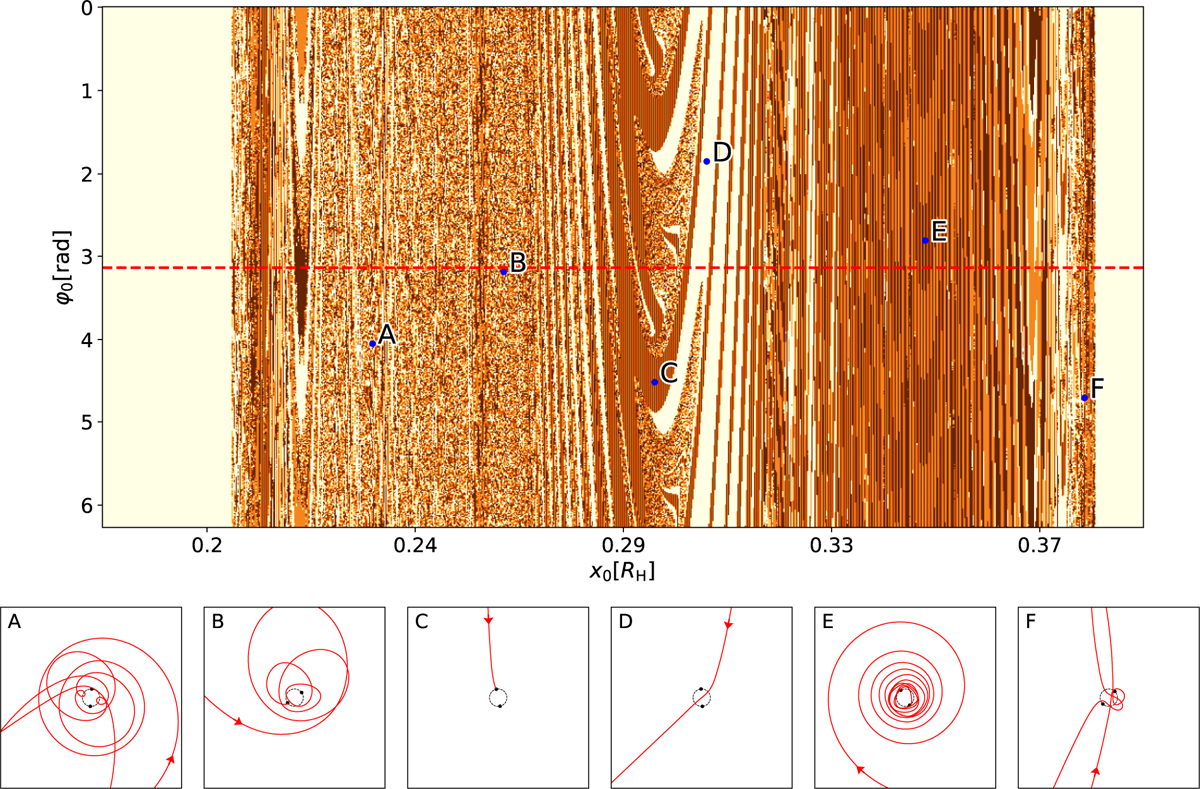Fig. 2

Download original image
Hitmap of pebble impacts on an equal mass binary system such that M1 = M2 = (MPluto + MCharon)/2, shown at the top. Every pixel is a pebble falling into the system. On the x-axis the x0 coordinate at moment of release is shown in Hill radii, while on the y-axis the initial phase orientation of the binary φ0 in radians is depicted as illustrated in Fig. 1. The orange pixels show impacts on M1, the brown pixels on M2 and the beige pixels indicate ejected pebbles. The final accretion ratio ε = 1, meaning that both bodies accrete an equal flux of pebbles because of symmetry arguments. The dashed red line indicates a starting angle of φ0 = π rad. From 6 results in this graph the trajectories have been plotted below, those are denoted as A-F in this hitmap. The resolution has been taken ![]() . Bottom panel: six trajectories from the hitmap above. Shown is a top-down view of the binary system with a pebble “falling” in. In each of the trajectories, an arrow denotes the pebble coming into the frame. Pebble trajectories A through F are sorted with their starting distance, x0, going from left to right, corresponding to closer radial distance from the star to further away, respectively. We note that even though the trajectory for F appears to start on the bottom left, it originated on the right outside of the frame only entering the image below.
. Bottom panel: six trajectories from the hitmap above. Shown is a top-down view of the binary system with a pebble “falling” in. In each of the trajectories, an arrow denotes the pebble coming into the frame. Pebble trajectories A through F are sorted with their starting distance, x0, going from left to right, corresponding to closer radial distance from the star to further away, respectively. We note that even though the trajectory for F appears to start on the bottom left, it originated on the right outside of the frame only entering the image below.
Current usage metrics show cumulative count of Article Views (full-text article views including HTML views, PDF and ePub downloads, according to the available data) and Abstracts Views on Vision4Press platform.
Data correspond to usage on the plateform after 2015. The current usage metrics is available 48-96 hours after online publication and is updated daily on week days.
Initial download of the metrics may take a while.


